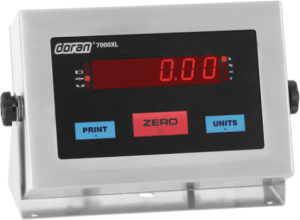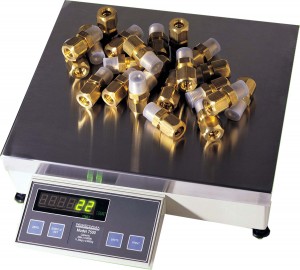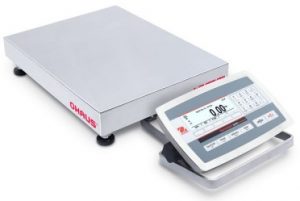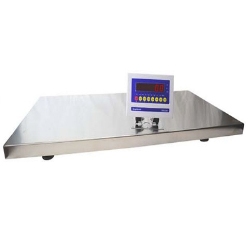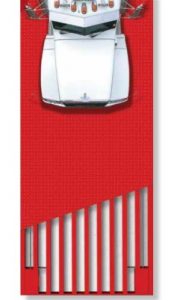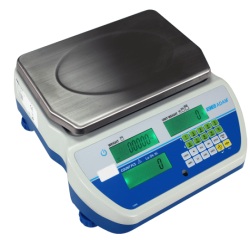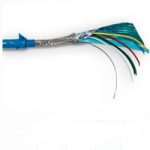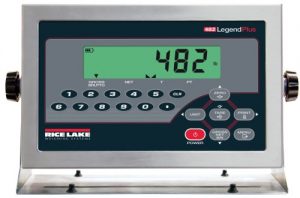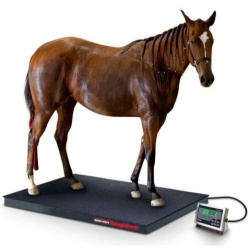You will often see an intermediate bulk container (IBC) tote bin or tank in various locations around industrial settings. And, in a lot of cases, customers are looking for IBC Tote scale options which would allow them to weigh those tanks and keep track of what is inside.
Before we get too far along, what exactly is an IBC container?
Intermediate bulk containers (also known as IBC tank, IBC tote, IBC, or pallet tank) are industrial-grade containers engineered for the mass handling, transport, and storage of liquids.
Rigid intermediate bulk containers are stackable, reusable, versatile containers with an integrated pallet base mount that provides forklift and/or pallet jack maneuverability.
These containers can be made from metal, plastic, or a composite construction of the two materials. Rigid IBC design types are manufactured across a volume range that is in between that of standard shipping drums and intermodal tank containers, hence the title “intermediate“ bulk container. IBC tank capacities generally used are often 1,040 and 1,250 litres (275 and 330 US gal).
As a distributor of Intermediate Bulk Container (IBC) tote scales, there are several ways that you could go about weighing your IBC tank. A tote load cell setup could be used to weigh the ibc tote where you basically build a scale using a load cell kit. The more popular approach would be to actually use an industrial floor scale where you could place the industrial platform scale under the tote in order to weigh the 275 gallon water tank.
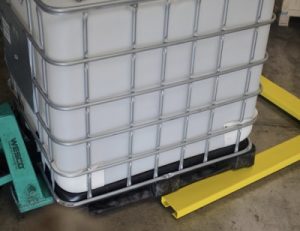
Every few months we get asked if anyone uses a 5×5 platform scale for weighing totes? A customer typically sees a scale online with 10,000 lb capacity and 5×5 size for sale. Adding a scale like that would eliminate guessing on how much product is left in the tote.
We basically offer high capacity weighing solutions for applications requiring frequent loading and unloading of IBC Totes and Carboys. An IBC Tote / Tank Scale is designed for weighing tote bins and carboys. We can provide industrial floor scales with various platform sizes (48″ x 48″, 60″ x 60″, 72″ x 72″ and more) and various capacities (2000 lb, 5000 lb, & 10,000 lb). We even have “U” shaped scales which can sometimes make adding a tank and removing a tank easier.
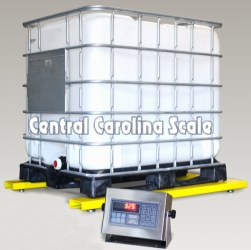
Some customers just put one of these IBC tote scales on their water truck and use a chemical pump. They zero the scale and you can get accurate weighing. You will want to make sure the scale is secure on the truck deck or bed and secure the tote on the scale.
Painted Steel scale platforms are typical with diamond tread plate. Stainless steel is also available. Weight indicators are available with 4-20 mA analog output and/or optional setpoint relays. Other options might include battery power, stainless steel enclosure, LCD or LED displays etc…
We can also quote you for intrinsically safe options if needed for weighing chemicals such as ammonia, fluoride, phosphate, polymers, sodium aluminate, sodium bisulfate, sodium hydroxide, and other liquids.
Tote or container scale choices have to be well designed and rugged for frequent on and off loading. Most scale platforms we offer for this type of application would have four load cells and adjustable feet. In addition to selling the scale equipment, we also have a highly qualified, factory trained scale repair department who can troubleshoot and fix any scale error you may have.
This scale base is available in standard sizes ranging from 24″ x 24″ to 72″ x 72″ (many other sizes available). There are various digital weight indicators available as well. Some popular choices are the Pennsylvania 7600E, Rice Lake 682 Plus, and Rice Lake 480 Plus. For more info please contact us for a quote by completing our Request for Quote form.

